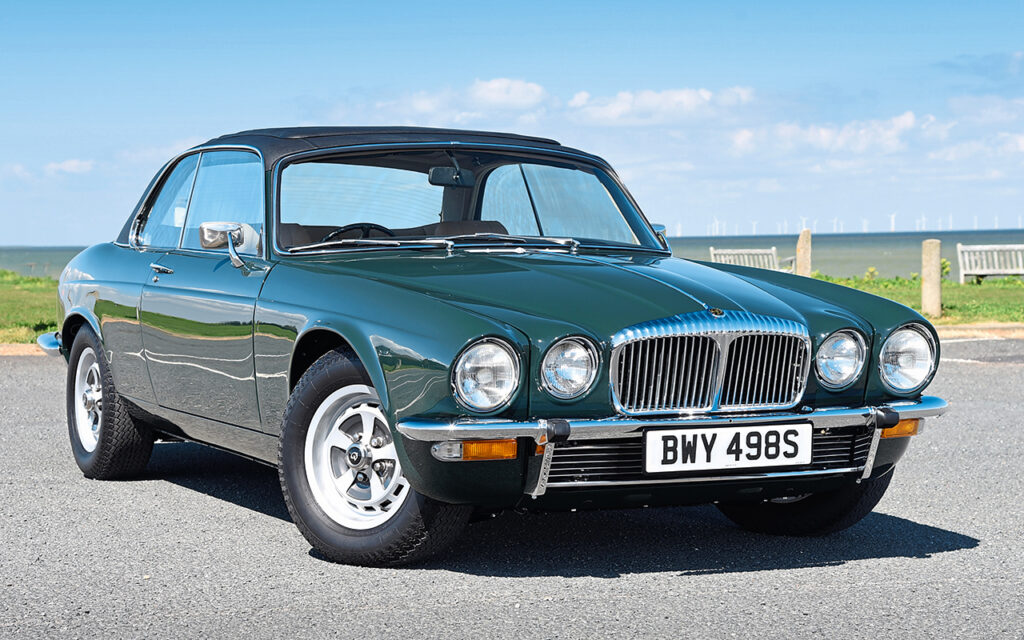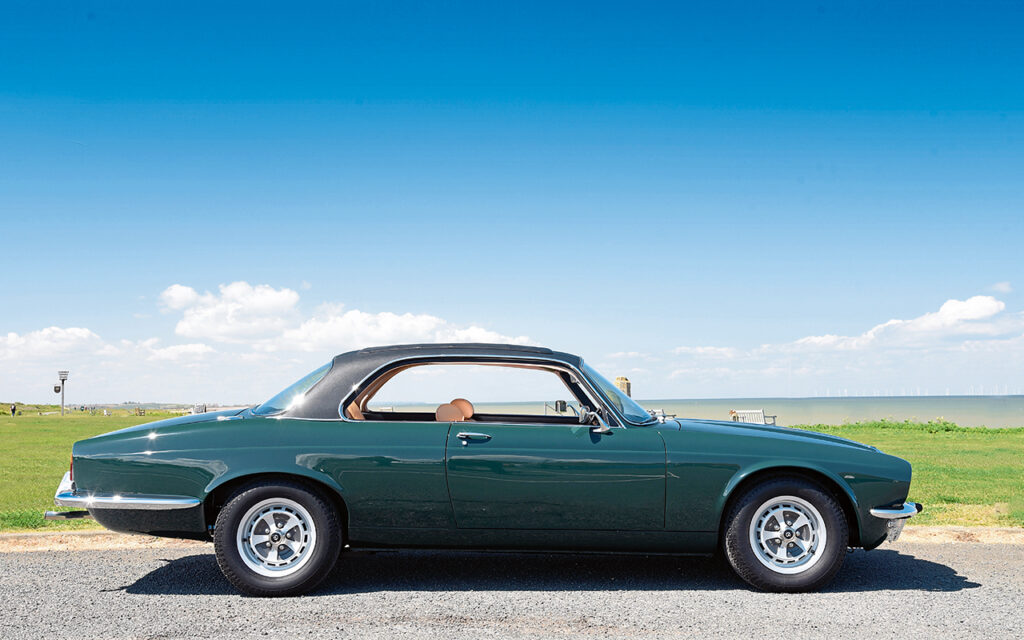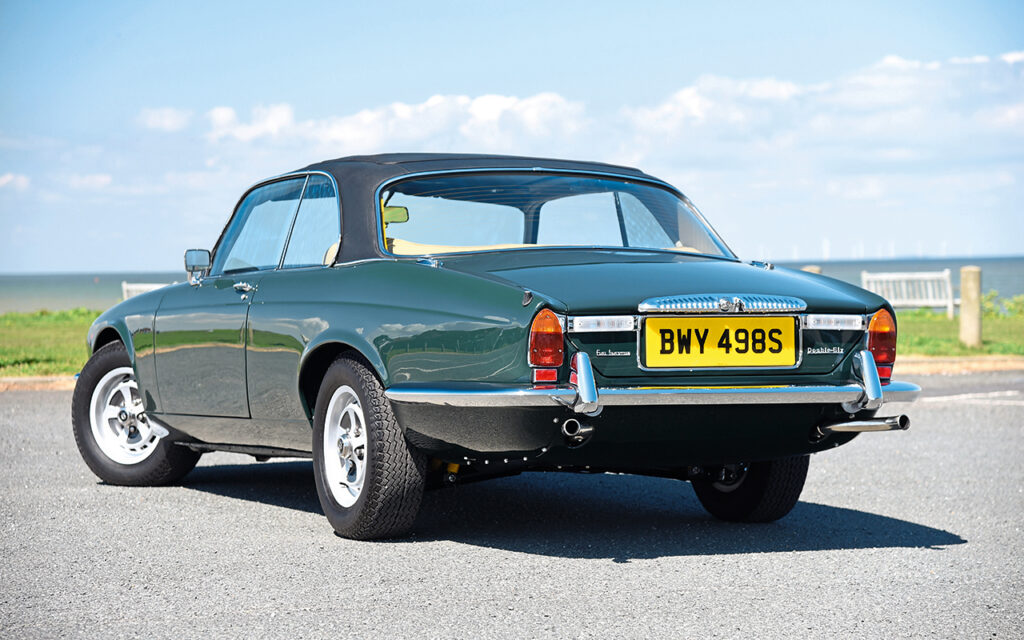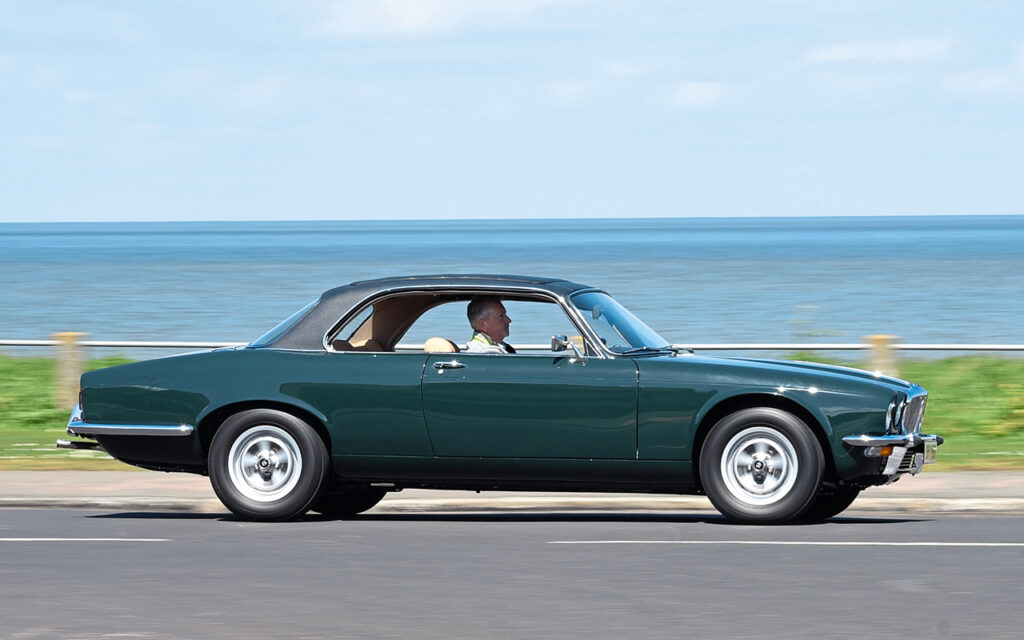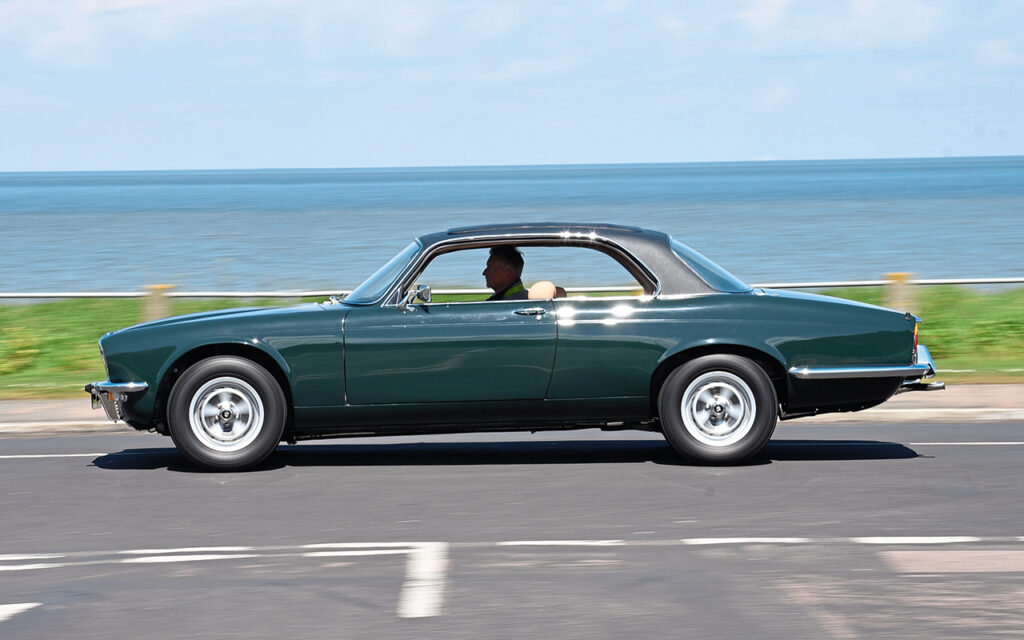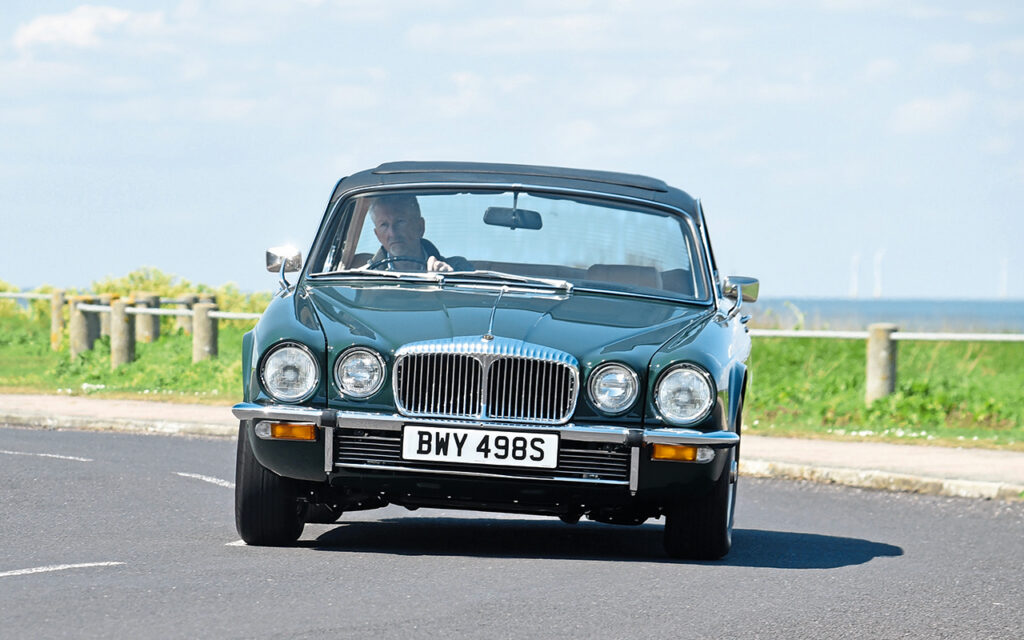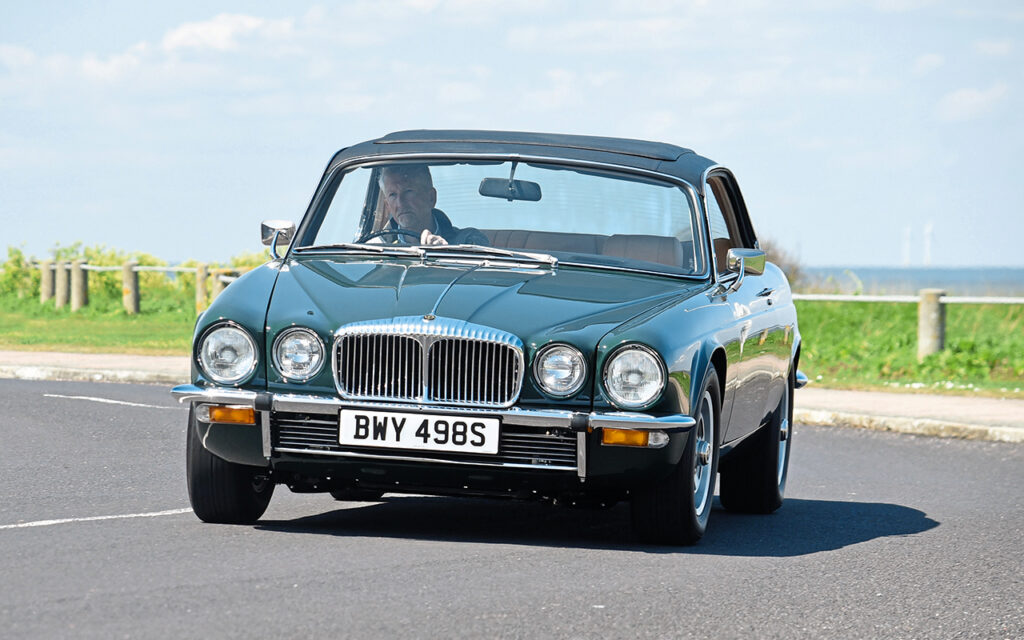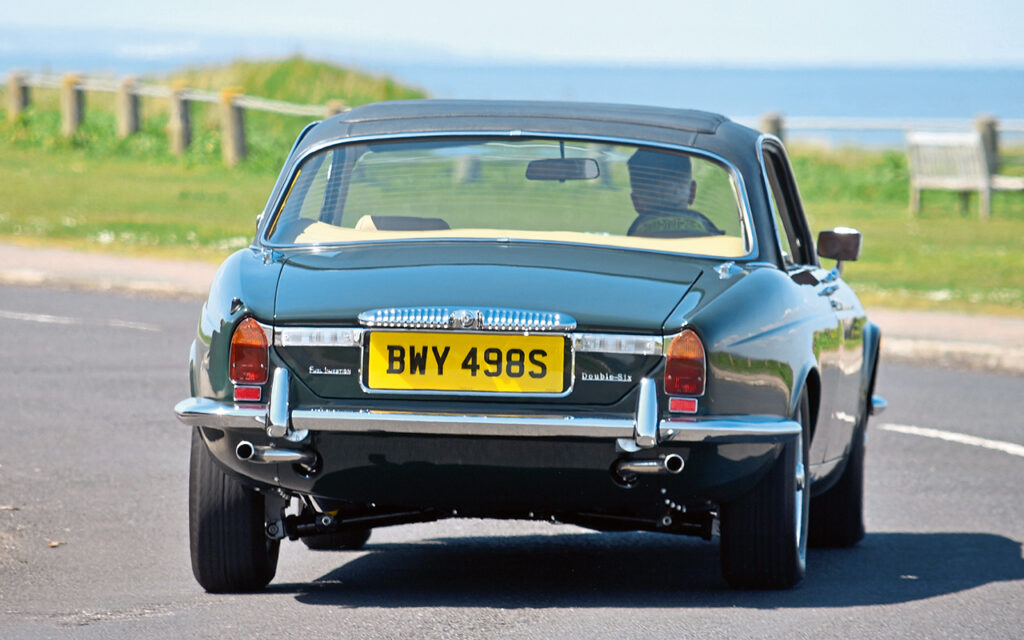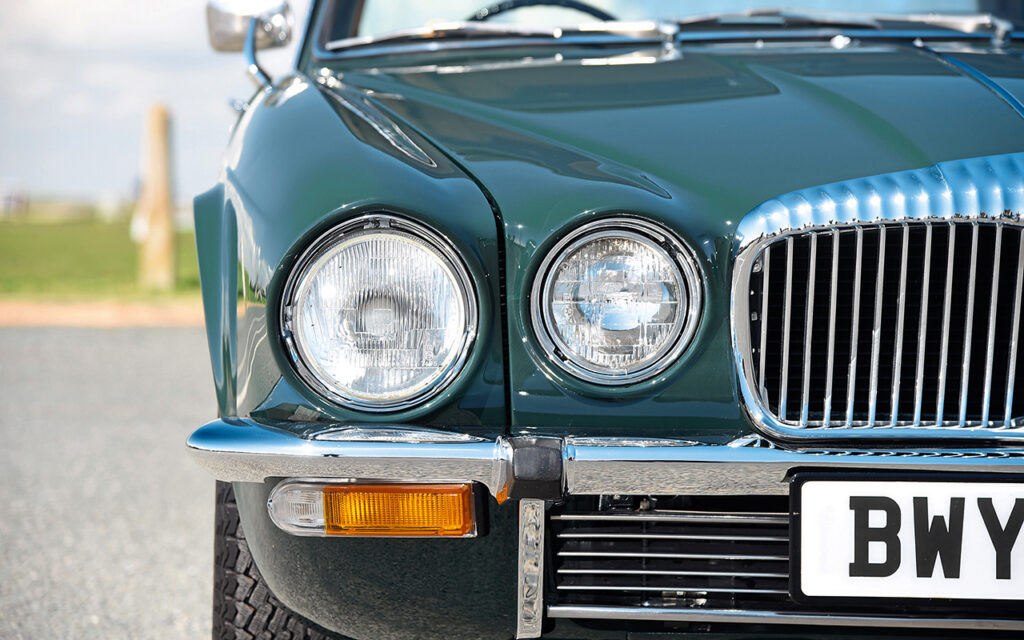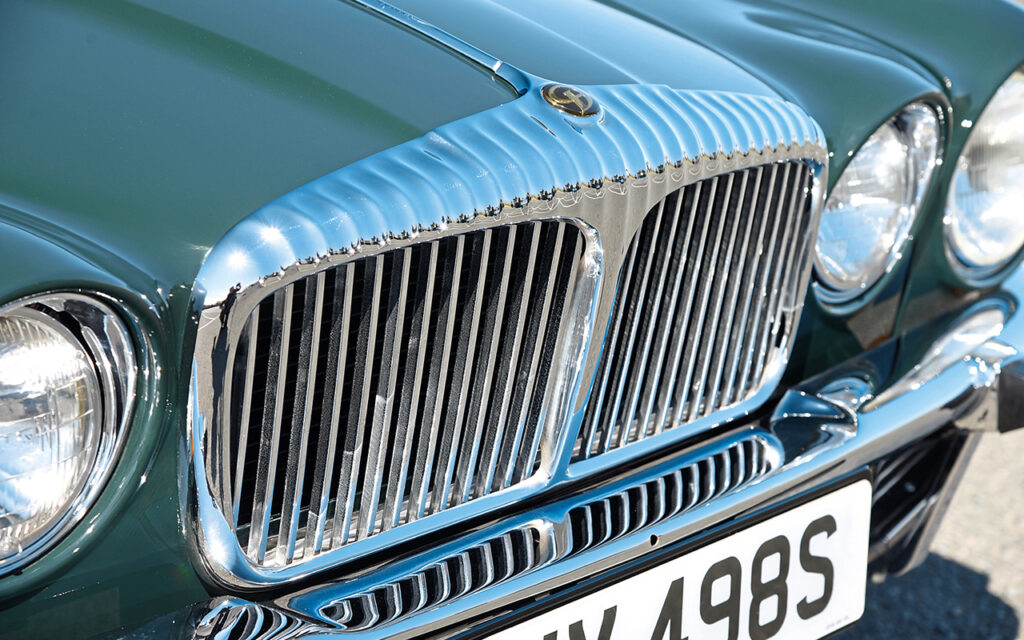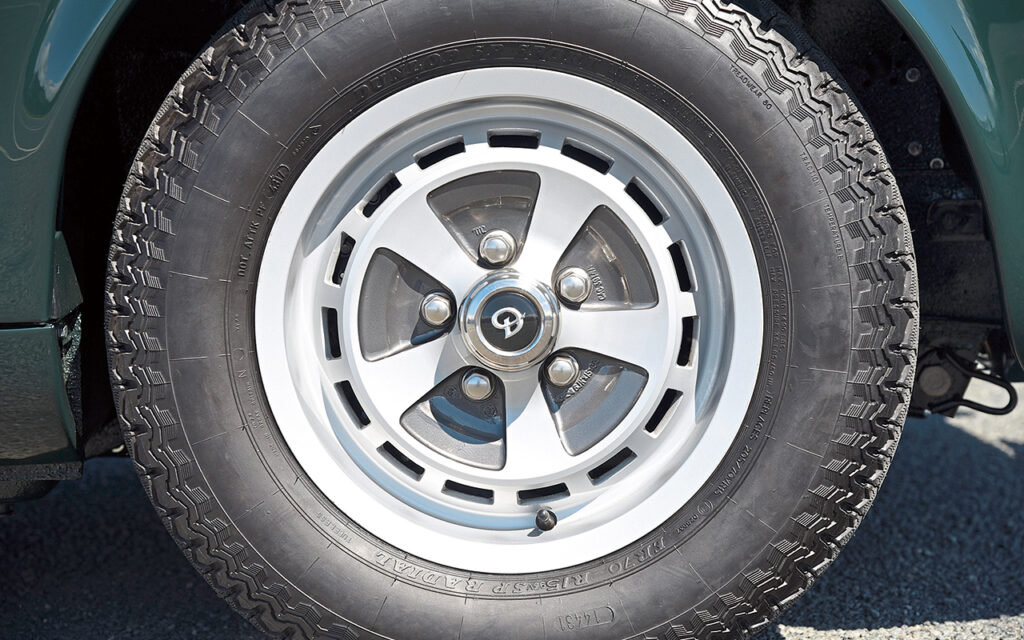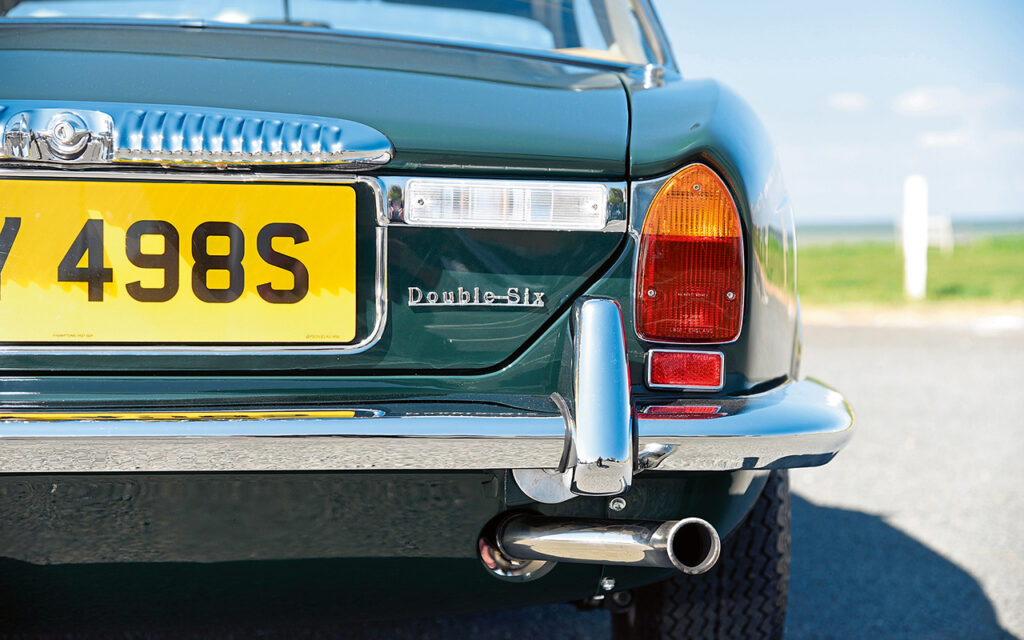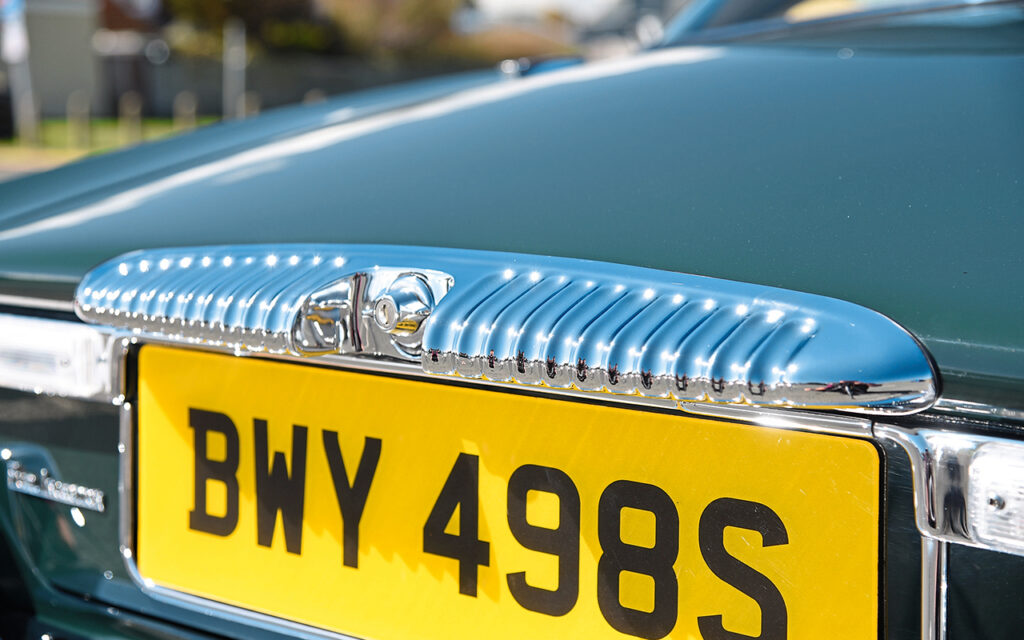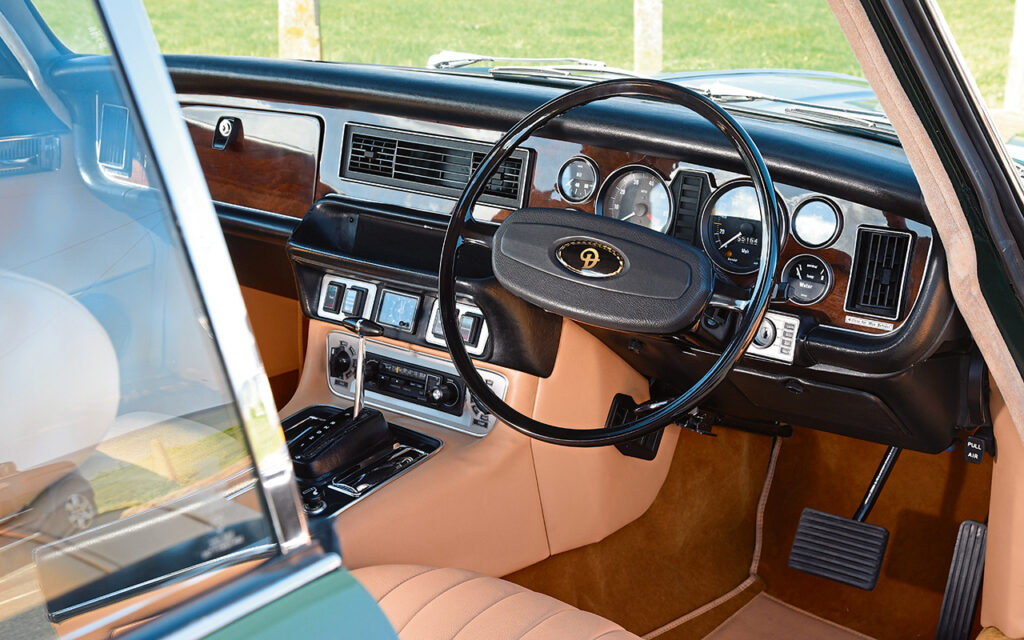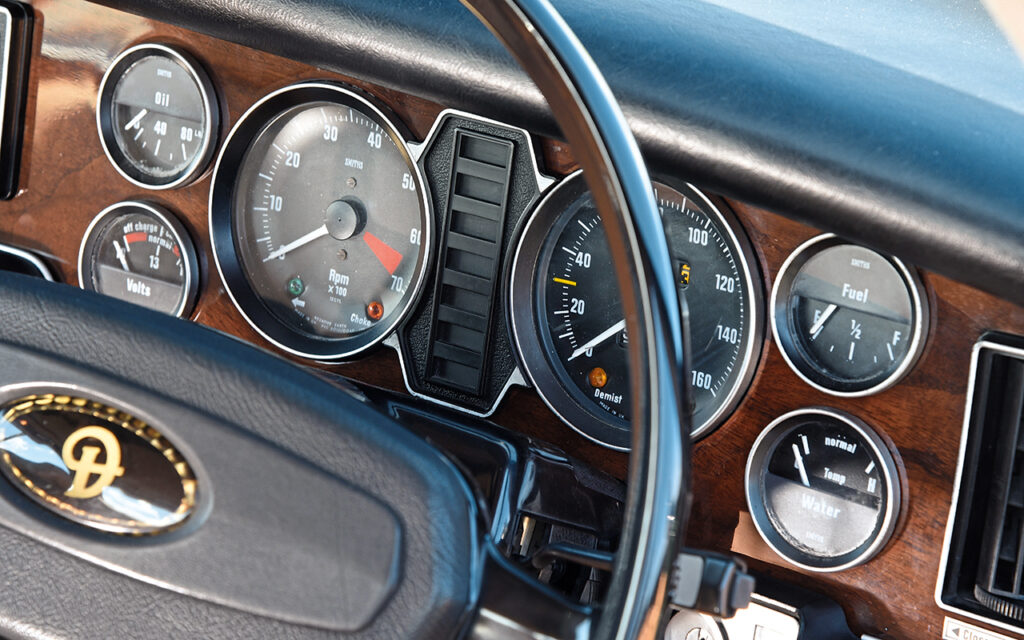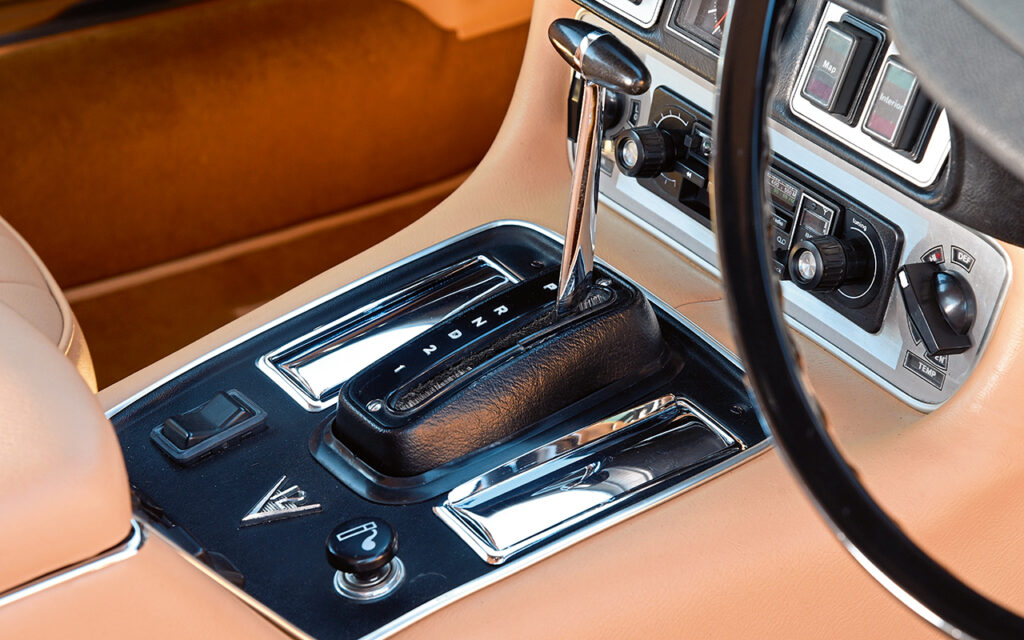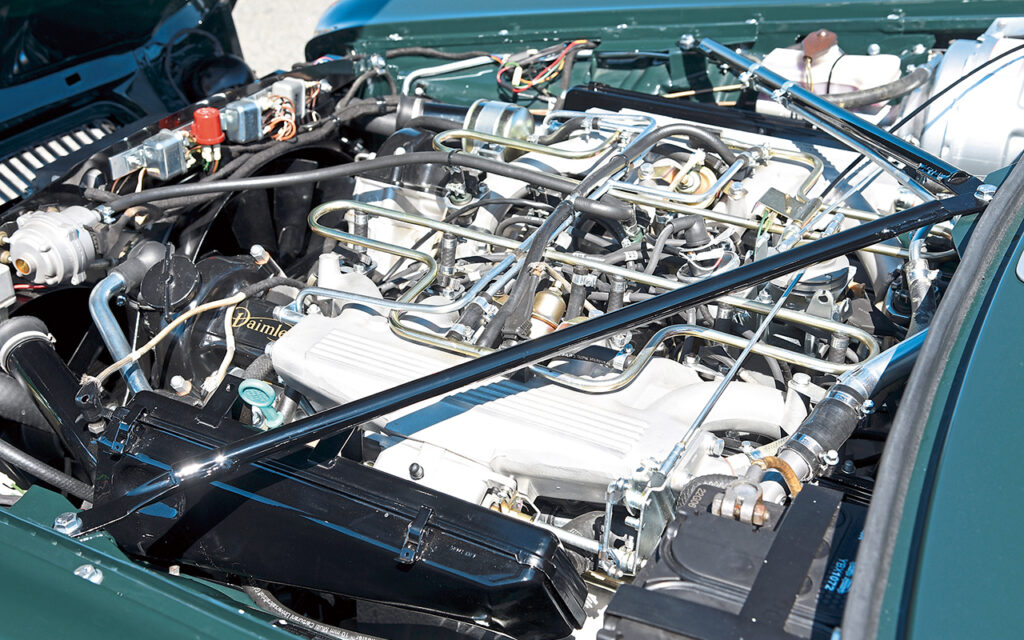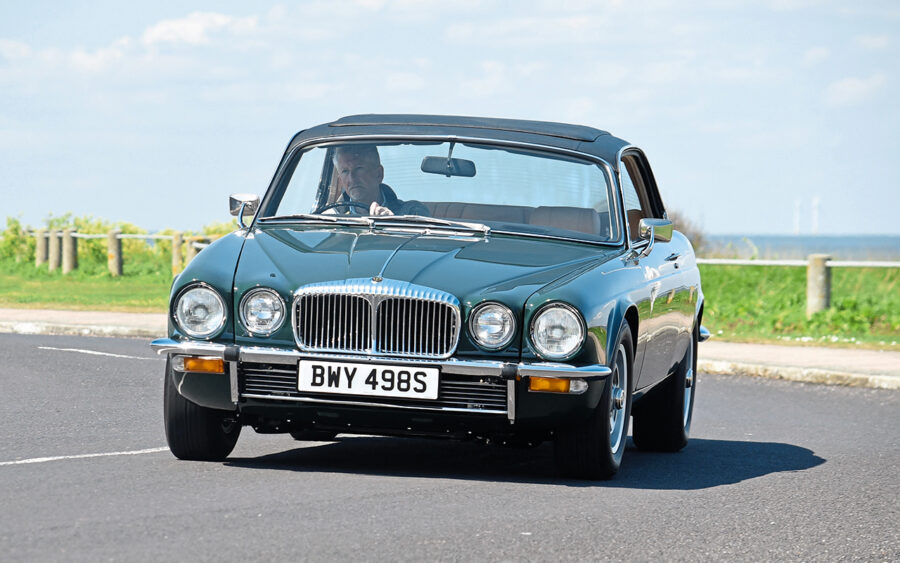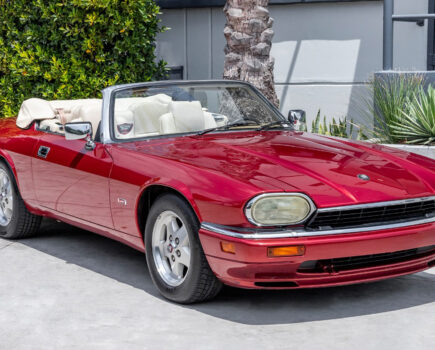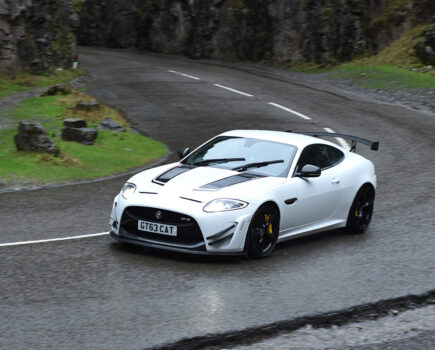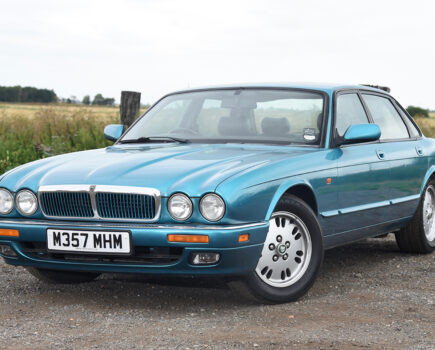Only a handful of Daimler Double-Six Coupes were produced. We track down a rare survivor and get behind the wheel
Words and images: Paul Walton
One of the least likely pairings in music history occurred when David Bowie appeared on Bing Crosby’s 1977 TV show and they sang Little Drummer Boy together. The mix of Bowie’s bohemian, slightly androgynous look and Crosby’s classic crooner style was universally considered to be even odder than when Richard Nixon met Elvis Presley in the Oval Office.
The same could be said of the Daimler Double-Six coupe. The oldest car brand in British history was – even by the mid-Seventies when under Jaguar’s stewardship – still seen as more refined and traditional than its racier upstart of a parent company. Its image wasn’t really one to mix with the, albeit handsome, rakish two-door V12 coupe then, but that’s exactly what Jaguar did. The resultant car always suffered from a slight identity crisis and was, therefore, only built in tiny numbers.
Ever since the 2.5 V8 in 1962, followed by the 420-based Sovereign four years later, there had been a Daimler version of Jaguar’s saloons. They had a distinctive, luxurious image with minimal cost and effort on Jaguar’s behalf, and doubled the company’s range. It also kept Daimler’s established, more conservative owners happy; they might have been as modern as Harris tweed, but they were often wealthy and loyal to the brand. Her Majesty Queen Elizabeth II, for example, always chose a Daimler over its Jaguar sibling until the brand was discontinued in the mid-2000s.
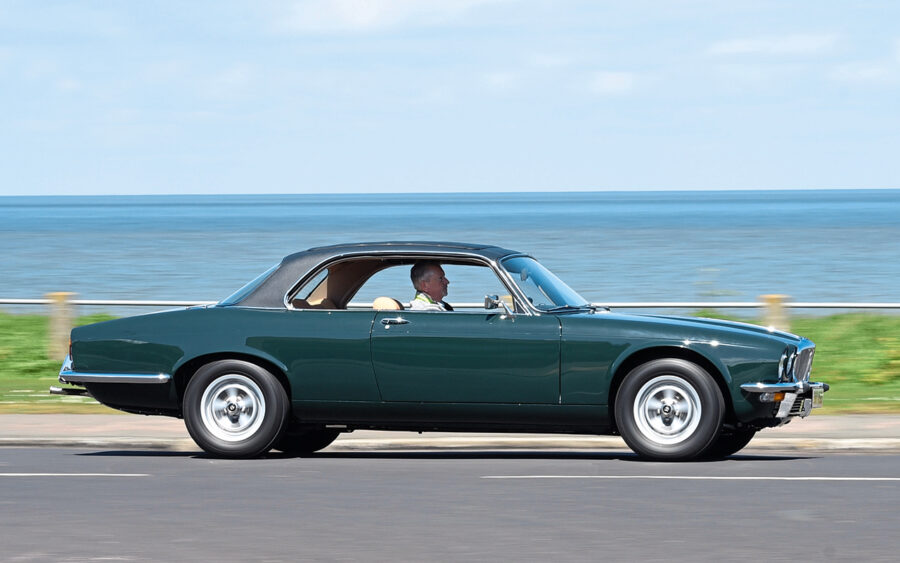
Jaguar chose the Frankfurt Motor Show in September 1973 to debut the XJ6 and 12 Series 2, and sitting alongside them was a two-door coupe based on the new saloon. Using the standard-length wheelbase produced a handsome car with close to perfect proportions, while the pillarless windows and deletion of the front quarter lights resulted in a cleaner, neater and more graceful appearance. The American magazine Road Test hit the nail on the head in its August 1976 issue by describing the design as, “A pleasing, elegant shape.” The coupe was apparently a favourite of Jaguar’s founder, Sir William Lyons, who was instrumental in pushing the car into production following issues with the window seals, which resulted in it not going on sale until the spring of 1975.
Naturally, there was a Daimler-branded version that followed the same recipe as the saloon, only differing on the exterior by the badging, a thin chrome strip running down the length of the bonnet and the fluted grille and boot finisher. Inside, there was a better grade of burr walnut veneer and thicker carpets. Yet, despite the minor differences, the 4.2 Sovereign and 5.3 Double-Six coupes were significantly more expensive than their Jaguar counterparts in 1976, the latter was £8,259, around £230 more than the Jaguar equivalent. This difference impacted on sales. The coupe was never made in huge numbers anyway over the two-and-a-half years it was produced, but of the 10,426 that were built, a mere 407 were Double-Sixes. This makes the Daimler V12 one of the rarest production cars ever to leave Jaguar’s Browns Lane factory.
It wasn’t just the high cost that made the Double-Six coupe unsuccessful. Daimler owners were more likely to be chauffeured than drive themselves and space in the rear of the coupe was too tight for a judge or member of the landed gentry – a concept supported by the fact that a little under 25k of all varieties of the straight-six and V12 Daimler Series 2 saloons were produced. Plus, aside from its earlier SP250, even before Jaguar’s takeover in 1960, Daimler was more associated with stately saloons than two-door sports coupes. It was the XJ12 version, don’t forget, that competed (unsuccessfully) in the 1977 European Touring Car Championship. Using the Daimler brand would have been akin to Harold Wilson competing the 100m sprint.
As a result, the Double-Six coupe has become something of a unicorn; so scarce, they’re almost never seen. But, we’ve managed to hunt down one that exemplifies the breed.
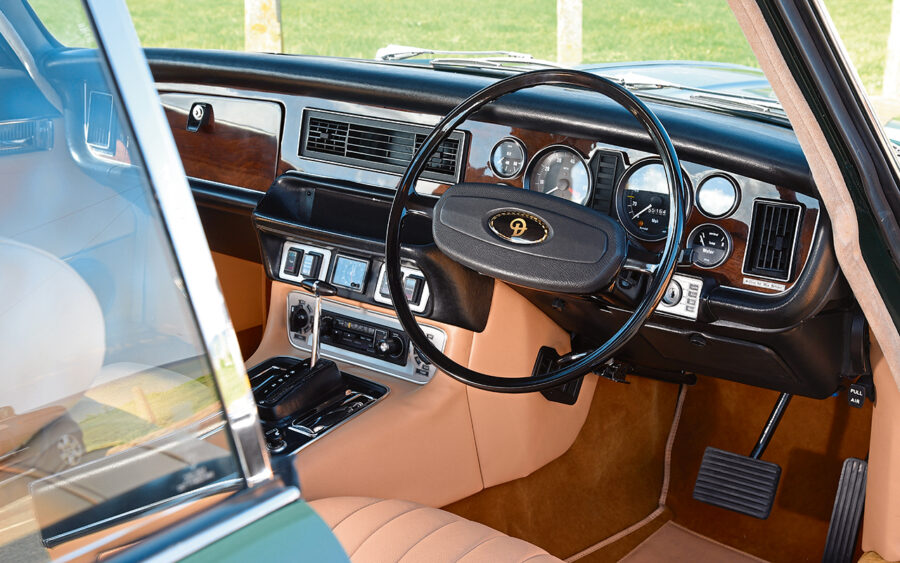
This glorious British Racing Green Daimler Double-Six was registered in February 1978, three months after production of the coupe ended, and is one of the final examples of the two-door XJ to have been made with either branding. Recently restored by Turner Classics, of Ramsgate, Kent, it perfectly illustrates what makes the model so special. The extra cost aside, it’s difficult to understand why the Double-Six wasn’t more popular. Daimlers of the past were always about elegance and with its perfect proportions and compact dimensions, there’s no more elegant car of the 70s than the XJ coupe. Being a Daimler adds further sophistication to the model compared to the Jaguar, which was more likely the choice of scoundrels. The optional 15in Kent alloys add something to any make of car they’re fitted to, but they especially suit the coupe, giving it a sportier look than the standard steel wheels and chrome hubcaps. Like skinny jeans on anyone past the age of 25, few cars are pull off a vinyl roof but the coupe does, the Daimler especially, the rich material adding to the car’s luxury image.
When I open the seemingly never-ending door (it’s 4in – 101.6mm – longer than the saloon’s), I’m greeted with more rich burr walnut than a furniture showroom. The veneer is no doubt slightly thicker than a standard model’s, yet it looks little different from an XJ12’s or even the entry 3.4-litre saloon, for that matter. Aside from the few usually optional extras that were added as standard, you have to applaud Jaguar’s audacity for charging so much more for what is an identical car to the XJ12.
It is comfortable, though. With wide, squashy seats and plenty of room in the front, the coupe was made for cruising, preferably somewhere glamorous between Saint-Tropez and Monaco. Obviously that’s impossible for me now due to current Covid-19 restrictions (plus, I need to be home by teatime), so the Kent coast will have to do.
The sun is shining and the sky as blue as a painting by the French artist Yves Klein, so I lower all four side windows – due to a lack of room in the wing, the rears sinking as awkwardly as my 80-year-old father sitting on the floor – then pull back the large, period-correct Webasto sunroof that Turner Classics has added on behalf of the owner. I’ll need it, too. Although air conditioning was usually standard on all V12 coupes, Ian Turner from Turner Classics tells me that it was never fitted to this particular car.
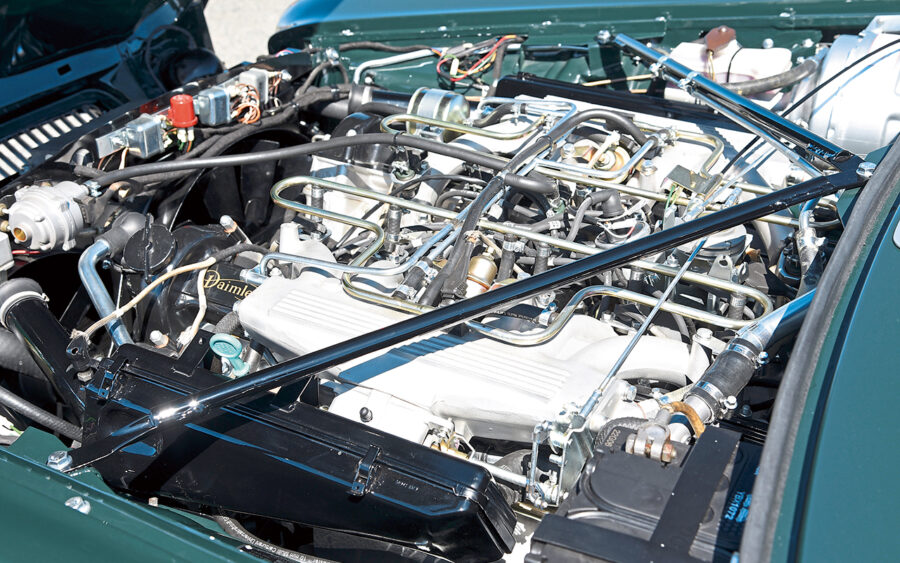
The heart of any V12 Jaguar is the engine and this one is no different. With a mere 55,000 miles on the clock, the big motor needed little attention during the restoration and it’s a real gem, pulling smoothly, effortlessly and inaudibly through the three-speed GM 400 automatic gearbox (there wasn’t a manual version). Road testers at the time were critical of the XJ12’s ultra-light, fingertip steering, arguing it lacked bite. While that’s unquestionably true, it also makes the car easy and relaxing to drive, requiring as much effort behind the wheel as watching Netflix on the sofa. In any XJ the ride is perfect, ironing out all imperfections in the road, but by weighing just 1,839kg (a mere 100kg more than an XJ12 Series 1 SWB) the car doesn’t feel the heavy, ponderous lump through bends that the XJ12’s reputation would have you believe.
With its perfect blend of style, performance and rarity, I don’t mind admitting I’m very taken by this big, green coupe. And, judging by the many positive responses when I posted images on our social media pages, so is everyone else. Which can mean only one thing: just as Little Drummer Boy later became an unexpected hit, the Daimler Double-Six coupe is more popular now than when new. Ironically, Bowie and Crosby were a perfect pairing because their voices complemented each other’s, as Daimler’s more traditional image does this already elegant car.
